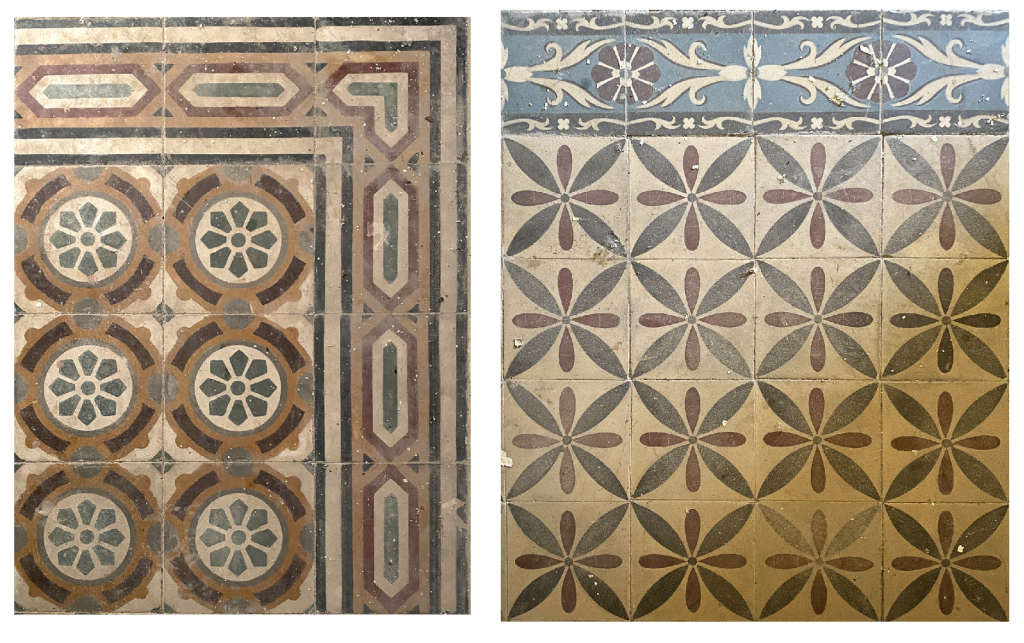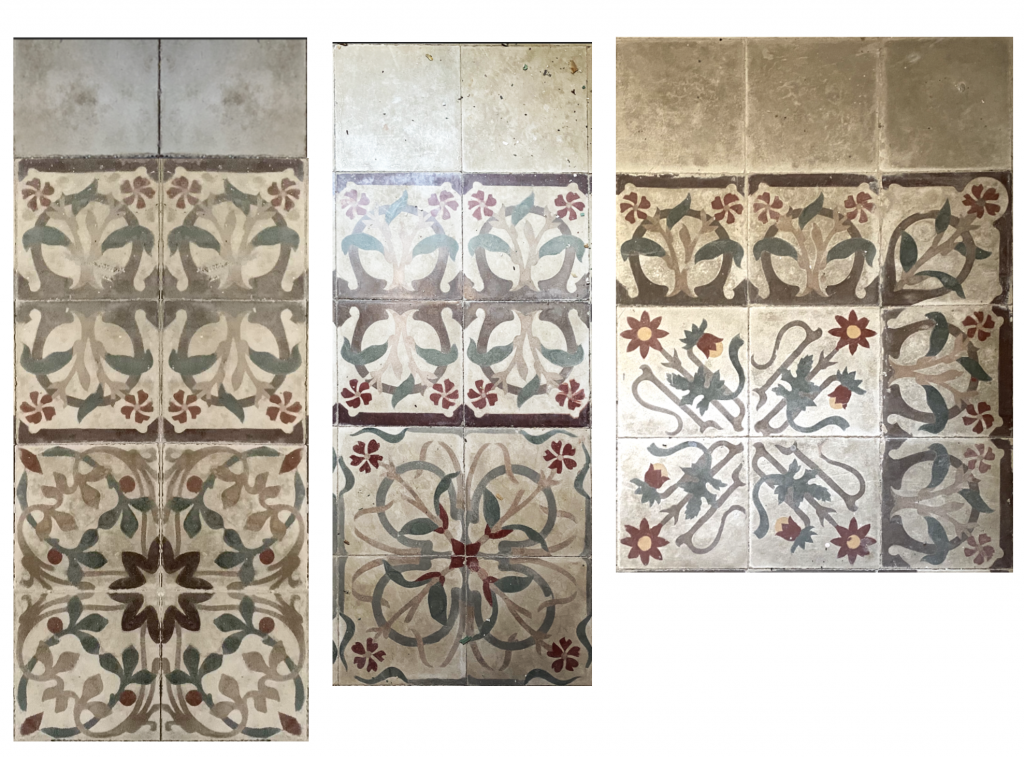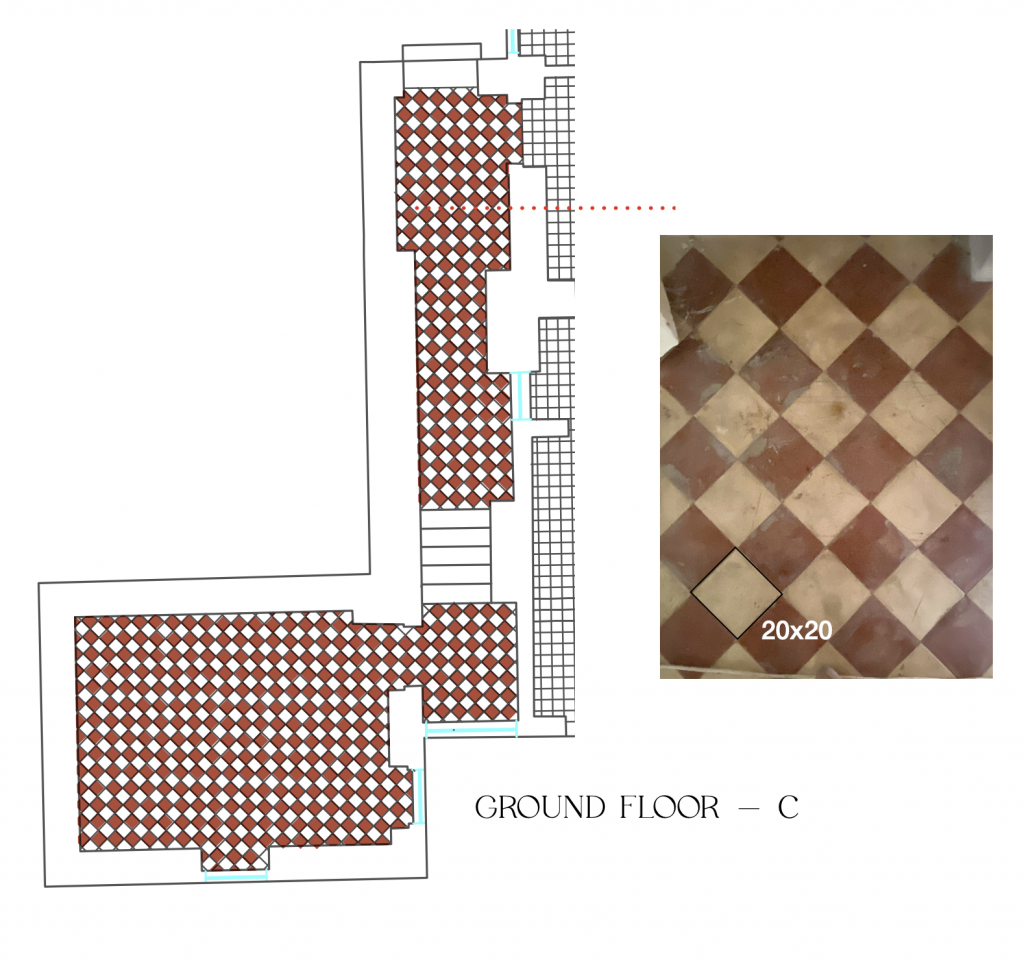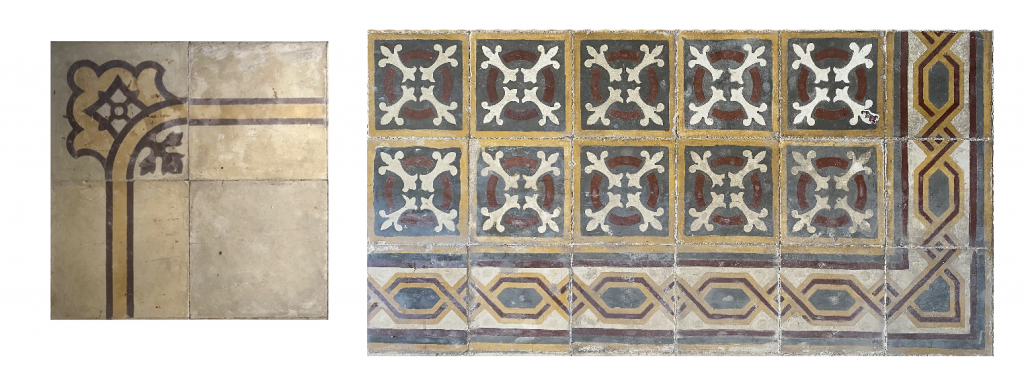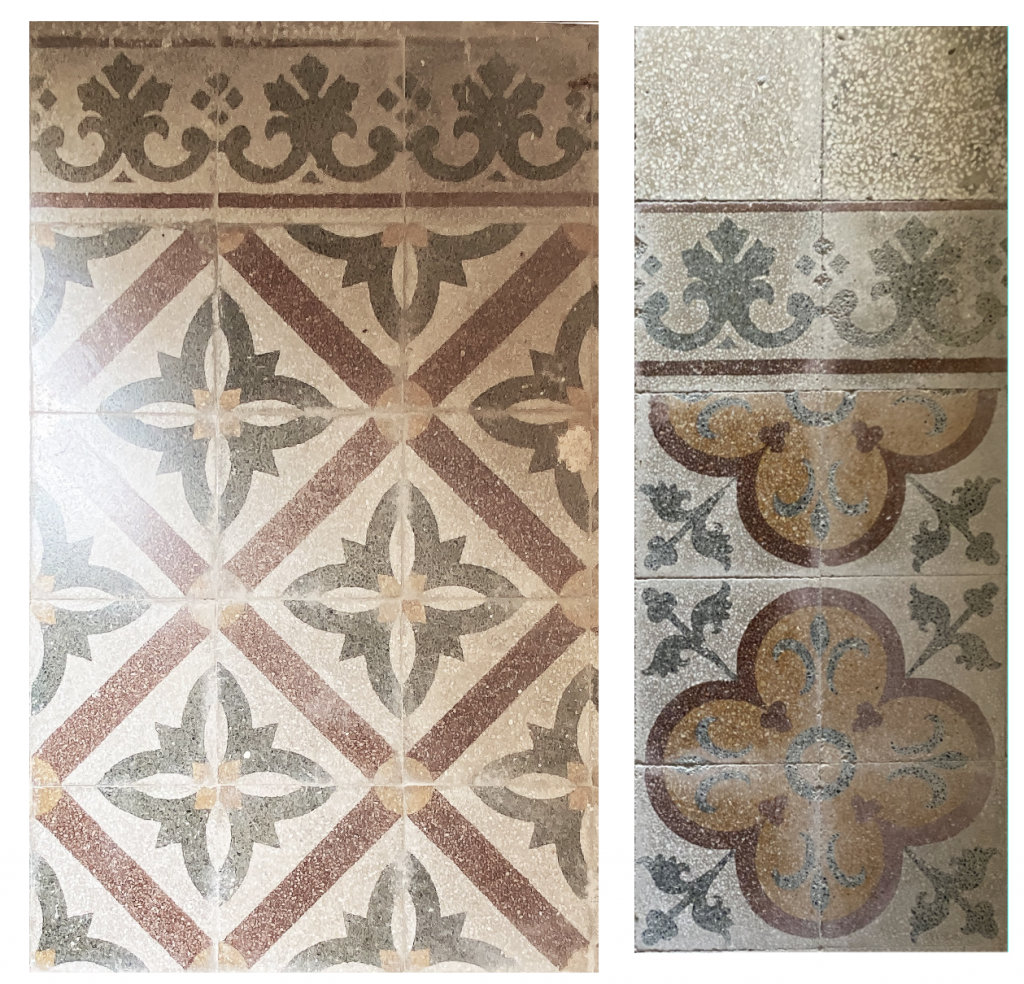
02 Jan Ceramic tiling and flooring
Villa Luginsland is an exceptional architectural wonder that boasts a rich history and well-preserved interior features. Among the most impressive elements of the villa are its stunning floors, which are adorned with an array of vibrant patterns that are both diverse and captivating.
Since its construction, Villa Luginsland has been known for its luxurious interiors, and the current reconstruction and restoration efforts are aimed at reviving its historical heritage and opulence. The property’s unique style is reflected in its ornate tile work, which draws inspiration from Turkish styles from the Ottoman Empire and Arab aesthetics. This style of embellishing palaces and residences with tiles has a rich history in Malta, and it has left an indelible mark on the island’s architectural tapestry.
The intricate geometric patterns and bold hues of the tiles are truly works of art, imbuing Malta’s architectural heritage with a distinct character. For a period of over three centuries, these traditional tiles were overlooked, and stone slabs were the norm in mediaeval farms and homes. However, decorative tiling experienced a resurgence in popularity during the 19th century under British rule, and it is now revered as a cultural and artistic legacy.
The classical motifs selected for the Villa’s tiles blend harmoniously with the interiors of the property. Each room is enhanced by the vivid, captivating designs, which complement the elaborately decorated walls. The property boasts an array of tile patterns, but I have selected just a few of the most striking ones to avoid visual overload.
Each of these patterns was meticulously handcrafted by skilled artisans, who blended cement, powdered marble, and vibrant pigments to create the perfect mix. The design process involved a metal mould partitioned for each colour segment. The artisans carefully mixed small quantities of the blend in specific colours and poured it into the mould, which was secured with a square clamp during the setting process. The result was a beautiful tile that was a testament to the artisan’s skill. This near-extinct technique has been preserved and is highly prized today.
In the restoration journey, conserving as many original tiles as possible and replicating those that are missing is of the utmost importance.
The ground floor also showcases later tile variations, featuring terrazzo, which was popular in the early 20th century, alongside rooms adorned with traditional terracotta floors. Overall, Villa Luginsland is a true masterpiece, and its well-preserved tile work is a testament to Malta’s rich architectural heritage.


